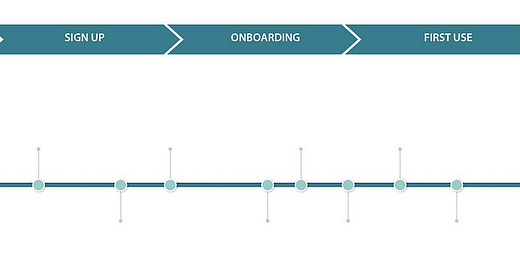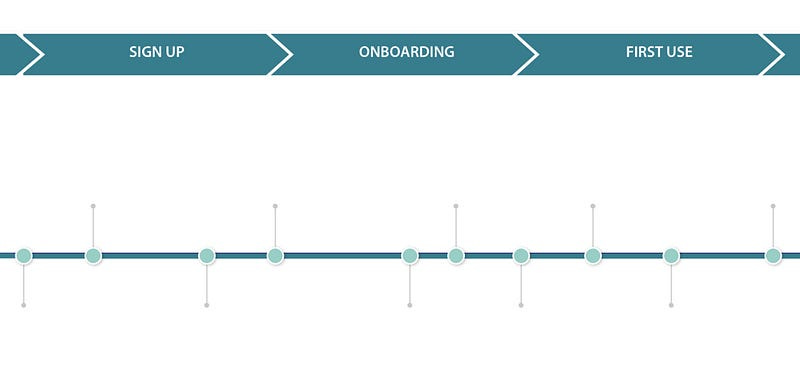The two core types of customer journeys
Having just defined what a Customer journey or CX map is, I will now make a controversial statement:
There are only really two types of customer journey map.
Yes, that’s right. You can use a customer journey map to communicate a lot of things about a customer journey, omnichannel experience or connected service but when it comes down to it, unless you want to confuse the heck out of everyone, you are really only documenting either a current state or a future state journey.
Let’s dive in to these...
Type 1: Current state
What it is
A current state map shows the experience/journey in its current state. In short, ‘where we are now’.
What it’s good for
This type of map is used when you are trying to understand the current user/customer journey and align stakeholders around what the journey is and what needs to be fixed.
It’s generally used as the first step in one of two projects:
A. Complete experience redesign — perhaps you are undertaking a digital transformation or large-scale tech or systems/process investment and the journey and you need to expose all current issues.
B. Ongoing experience optimisation — perhaps there is an awareness that the current experience is sub-optimal, but rather than a wholesale redesign, the business wants to make incremental improvements over time. This mapping approach can help identify issues and prioritise activities.
What it includes
It includes any/all the elements previously described. The main difference is that it’s going to point out pain points and opportunities — what is wrong, and what we should fix.
What the risks are
This kind of mapping absolutely has to be based on evidence. You cannot ‘make up’ a current-state map, especially if you’re going to spend time and money fixing an experience.
In a later post I will dive into research methodologies, but needless to say you should definitely be carrying out primary research, touchpoint analysis, leveraging available data etc.
Also, this mapping exercise must be followed by prioritisation sessions with all impacted stakeholders. Otherwise, you’re just
Keep reading with a 7-day free trial
Subscribe to It Depends... to keep reading this post and get 7 days of free access to the full post archives.





